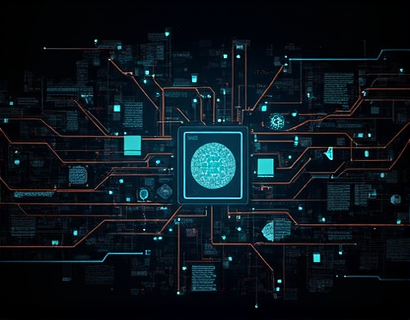AI-Driven Mental Health Insights: A Safe and Comprehensive Resource
In the rapidly evolving field of mental health, the integration of artificial intelligence (AI) has opened new avenues for providing specialized insights and support to a diverse audience. This article explores the emergence of an innovative AI chatbot designed to deliver accurate and safe mental health information tailored for professionals, students, and enthusiasts across various age groups. The focus is on creating a secure and engaging environment where users can access verified content and gain valuable knowledge about mental health services and industry trends.
Understanding the Need for AI in Mental Health
The demand for mental health services has surged in recent years, driven by increased awareness and a willingness to seek help. However, the traditional models of delivering mental health information face several challenges, including accessibility, accuracy, and timeliness. AI-driven solutions address these issues by providing a scalable, reliable, and up-to-date resource for mental health insights. An AI chatbot can process vast amounts of data, offer personalized recommendations, and ensure content is verified for safety and accuracy.
Features of an AI Chatbot for Mental Health
The AI chatbot in question is equipped with several key features that make it a valuable tool for its target audience. Firstly, it provides specialized insights into psychologist services, helping users find the right professional based on their specific needs. The chatbot can filter services by location, specialization, and availability, making it easier for users to access timely and appropriate care. Additionally, the platform covers a broad range of topics within the mental health industry, including recent trends, research findings, and best practices.
Content Verification and Safety
One of the most critical aspects of this AI chatbot is its commitment to content verification. All information provided is cross-referenced with credible sources to ensure accuracy and reliability. This is particularly important for a sensitive topic like mental health, where misinformation can have serious consequences. The chatbot is designed to be safe for all age groups, including children and students, by filtering out inappropriate content and providing age-appropriate responses. This ensures that the platform is accessible and beneficial for a wide range of users.
Target Audience and Their Needs
The AI chatbot is tailored to serve multiple segments of the population, each with unique needs and concerns. For professionals, the chatbot offers in-depth information about the latest research, treatment methodologies, and industry standards. Educators and parents can find resources on how to support mental health in schools and at home, including tips for recognizing signs of distress and fostering a supportive environment. Students and mental health enthusiasts will benefit from general information, self-care tips, and guidance on where to seek help.
For Professionals
Healthcare professionals, including psychologists, psychiatrists, and counselors, can use the chatbot to stay updated on the latest research and treatment approaches. The platform provides access to case studies, clinical guidelines, and continuing education opportunities. Professionals can also network with peers, share experiences, and seek advice on complex cases. The chatbot's ability to provide real-time, relevant information makes it an invaluable tool for maintaining professional competence and delivering high-quality care.
For Students and Enthusiasts
For students studying psychology, mental health, or related fields, the chatbot serves as an educational resource. It offers simplified explanations of complex concepts, key terms, and historical context. Students can ask questions about specific topics, receive explanations, and even get recommendations for further reading. Mental health enthusiasts, whether they are students or simply interested individuals, can explore a wide range of topics, from the basics of mental health to advanced therapeutic techniques. The chatbot's user-friendly interface ensures that information is accessible and engaging.
For Educators and Parents
Educators and parents play a crucial role in supporting the mental health of children and adolescents. The chatbot provides resources and tips on how to create a supportive environment, recognize signs of mental health issues, and know when to seek professional help. It offers guidance on implementing mental health education in schools, fostering resilience, and promoting emotional well-being. Parents can find advice on communicating with their children about mental health, managing stress, and encouraging healthy habits.
Interactive and Engaging Experience
The AI chatbot is designed to be interactive and engaging, ensuring that users remain interested and motivated to learn more. The chat interface is conversational, allowing users to ask questions in natural language. The chatbot responds with clear, concise information and can even use multimedia elements like images and videos to enhance understanding. For younger users, the chatbot can adopt a more playful tone and use interactive elements to keep them engaged.
Personalized Recommendations
One of the standout features of the chatbot is its ability to provide personalized recommendations based on user input. Whether a user is looking for a therapist, seeking information on a specific mental health topic, or needing self-care tips, the chatbot tailors its responses to the individual's needs. This personalization enhances the user experience and ensures that the information provided is relevant and useful.
Ensuring Accessibility and Inclusivity
Accessibility is a core principle of the AI chatbot. The platform is designed to be user-friendly for people with various abilities and technological comfort levels. It supports multiple languages and can adapt to different cultural contexts, making it inclusive for a global audience. For children and students, the chatbot includes a child-friendly mode with simplified language and visual aids. This ensures that all users, regardless of their background or abilities, can benefit from the resources provided.
Parental Controls and Child Safety
To address concerns about child safety, the chatbot incorporates robust parental control features. Parents can set restrictions on the types of content their children can access, monitor usage, and receive notifications about their child's interactions. The chatbot also includes a reporting mechanism for any inappropriate content or behavior, ensuring a safe and secure environment for all users.
Continuous Improvement and Community Feedback
The AI chatbot is not a static resource; it continuously evolves based on user feedback and the latest research. A feedback system allows users to rate the helpfulness of responses, suggest new topics, and report any issues. This feedback loop helps refine the chatbot's performance and expand its knowledge base. The platform also collaborates with mental health experts and organizations to ensure that the content remains up-to-date and aligned with best practices.
Building Trust Through Transparency
Trust is essential in mental health, and the chatbot addresses this by being transparent about its capabilities and limitations. Users are informed that while the chatbot provides valuable insights, it is not a substitute for professional advice. The platform clearly states that users should seek help from qualified professionals for diagnosis and treatment. This transparency builds trust and ensures that users understand the role of the chatbot in their mental health journey.
Conclusion
The AI-driven chatbot represents a significant advancement in providing mental health insights to a diverse audience. By combining specialized information, content verification, and an engaging user interface, it offers a safe and comprehensive resource for professionals, students, and enthusiasts. As the field of mental health continues to evolve, such tools will play an increasingly important role in democratizing access to accurate and timely information. The chatbot not only supports individual well-being but also contributes to the broader goal of creating a more informed and supportive society.










































